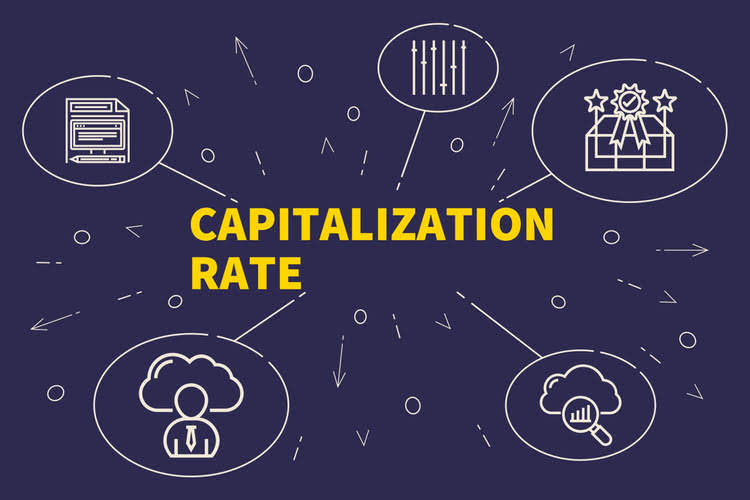Bank Reconciliation Statement Definition
Content
- Step One: Comparing Your Statements
- How Often Should You Reconcile Bank Statements?
- What Is Bank Reconciliation & Why Is It Important For Your Business?
- Step 2: Compare Deposits
- What Are The 6 Steps For Bank Reconciliation?
- Bank Reconciliation Statement Template
- To Detect Fraud
- First, Check Your Two Cash Balances

Deposits in transit are amounts that are received and recorded by the business but are not yet recorded by the bank. ABC deposited $25,000 of checks at month-end that were not deposited in time to appear on the bank statement. Enter as expenses all bank charges appearing on the bank statement, and which have not already been recorded in the company’s records. If there is so little activity in a bank account that there really is no need for a periodic bank reconciliation, you should question why the account even exists.
The bank reconciliation is an important part of a company’s internal controls over its assets. To be effective, it should be done by someone other than an authorized check signer and/or record keeper. The bank statement contains an ending bank balance of $320,000. Accounts with low activity do not need to be reconciled.
Step One: Comparing Your Statements
ABC issued $80,000 of checks that have not yet cleared the bank. A check for the amount of $470 issued to the office supplier was misreported in the cash payments journal as $370. Check your receipts to find any cash receipts that were not automatically recorded by the bank. Print the Check Register and the Cleared Check Register selecting the options to include check details. Similarly, an amount owed to a supplier should be registered in expenses as the amount is removed from your bank account. Separating reconciliation and AR/AP duties between different financial operations staff eliminates the opportunity for occupational fraud to go undetected within your business.

It’s common to reconcile accounts as frequently as you receive account statements from your bank or credit cards, which is often monthly or quarterly. You can, however, make use of online account access to reconcile accounts more often.
How Often Should You Reconcile Bank Statements?
The reconciliation process requires business owners to understand some key accounting concepts, such as NSF checks and deposits in transit. Adjust the cash balances in the business account by adding interest or deducting monthly charges and overdraft fees. After all adjustments, the balance on a bank reconciliation statement should equal the ending balance of the bank account. Let’s assume that a new https://www.bookstime.com/ company opens its first checking account on June 4 with a deposit of $10,000. During the month of June the company wrote five checks with a total of $5,000. It also made a $2,000 deposit in the bank’s night depository after banking hours on June 30. As a result, the company’s Cash account (in its general ledger and referred to as the “books”) as of June 30 shows a positive, debit balance of $7,000.
Once you’ve figured out the reasons why your bank statement and your accounting records don’t match up, you need to record them. Hopefully you never lose any sleep worrying about fraud—but reconciling bank statements is one way you can make sure it isn’t happening. Your business may face several situations where you are not directly responsible for discrepancies between company records and financial records. Some of these situations include incorrect What is bank reconciliation product delivery, projects not reaching milestones on time, and more. If there is no real time visibility into this information, then the finance team will not catch the reason/context behind the inconsistency in data. – Next, you should check that all your withdrawals are recorded in your books. This should include the obvious expenses, such as rent and payroll, as well as things you may not yet have accounted for, such as bank fees.
What Is Bank Reconciliation & Why Is It Important For Your Business?
The longer you wait to reconcile your accounts, the more time and work you’ll need to spend going through the records. No matter what choice you make for your own business needs as to the frequency of your reconciliations, it’s best to remain consistent. For various reasons, these two statements may not line up. Reconciling a bank statement is like performing an investigation as to where and why the statements don’t match up.

Download our free Excel bank reconciliation template and try it out. As downloaded, it will reflect the reconciliation numbers described in the By the Bay Contracting example described above, but with additional rows for further adjustments. You can change the numbers to reflect examples from your organization’s statements and books, and add rows as needed (but don’t forget to adjust the provided formulas). A company that takes a disciplined approach to bank reconciliations — and that does them on a set schedule — often has an advantage in spotting cash-flow issues. With this early view of a potential problem, a company can take steps to minimize any disruption to its business.
Step 2: Compare Deposits
Therefore, each transaction on the bank statement should be double‐checked. If the bank incorrectly recorded a transaction, the bank must be contacted, and the bank balance must be adjusted on the bank reconciliation.

Running a business inevitably means having to deal with accounts to keep track of credit card accounts and bank accounts that generate statements each month, quarter, and year. Interest income reported on the bank statement has usually not been accrued by the company and, therefore, must be added to the company’s book balance on the bank reconciliation. The final transaction listed on the Vector Management Group’s bank statement is for $18 in interest that has not been accrued, so this amount is added to the right side of the following bank reconciliation. By conducting bank reconciliations on a regular basis, you can detect fraud and rectify mistakes quickly.
After confirming these reports are correct, save the bank reconciliation. Only open items under the Clearing Accounts tab and the Unreconciled Items Accounttab, the totals will be calculated by all items inside the selected time period.
What Are The 6 Steps For Bank Reconciliation?
The accountant typically prepares the bank reconciliation statement using all transactions through the previous day, as transactions may still be occurring on the actual statement date. Note that this balance is different from the company’s general ledger’s Cash account balance of $7,000. Generally, neither balance is the correct amount of cash that should be reported on the company’s balance sheet.
Because reconciling items that affect the book balance on a bank reconciliation have not been recorded in the company’s books, they must be journalized and posted to the general ledger accounts. The $1,565 credit memorandum requires a compound journal entry involving four accounts. Cash is debited for $1,565, bank fees expense is debited for $25, notes receivable is credited for $1,500, and interest revenue is credited for $90. Bank reconciliation meansreconciling financial statements which are owned by both the business itself and the bank statement. Without bringing these 2 records together the process of bank reconciliations would not bring value. From here each account is checked with records to assure a purchase date, income or expenditure, notes or additional needs, and more. This part, specifically, is where many differences arise.
Bank Reconciliation Statement Template
When the reconciliation is complete, you can automatically enter adjustments such as bank service charges to the general ledger. Bank reconciliation aligns the cash balances on a company’s bank statements with the cash balances it has on its books. Among the benefits of bank reconciliation are better cash-flow management, better management of accounts receivable and a better ability to spot fraud. The right steps and technologies can help companies increase the speed and efficiency of their bank reconciliation processes, regaining time for other activities.
- Increase the bank statement balance by $2,000 to reflect the deposit and decrease it by $1,000 to account for the unprocessed check.
- The two primary documents are the bank statement and the check register.
- While it can be performed by an individual for their own finances, it’s a process that happens within almost every business.
- Your goal is to reconcile any differences between the bank balance and your cash account records.
- We say “almost” because even without separation of duties, there are still lots of reasons to reconcile bank accounts.
- Preparing a bank reconciliation statement helps businesses to eliminate possible errors in transactions or bookkeeping.
If the check cleared, indicate that fact in your records. Increase the bank balance for any deposits that have not posted . There may be a delay between the time you make a deposit at the bank, and the time the deposit is posted as an increase to your bank account.
Join Over 140,000 Fellow Entrepreneurs Who Receive Expert Advice For Their Small Business Finances
However, the check doesn’t clear until April 9, and $300 is withdrawn from The Tree Company’s bank account and deposited into the cleaner’s account. – Now, you need to ensure that all of your expenses match up with a withdrawal listed on your bank statement. There may be a wide range of reasons why your expenses aren’t listed on your account, such as payments not clearing in time or being made from a different account. – Every entry in your books should match up with a deposit on your bank statement.
To Detect Fraud
Now that we have looked at how to prepare a reconciliation, the purpose of the reconciliation should be quite obvious. The purpose is to ensure that the balance in a company’s cash account matches that in the company’s bank account after all necessary adjustments have been made to each. This ensures that any errors in either account are detected and gives an added sense of comfort in the reliability and accuracy of accounting records.
First, Check Your Two Cash Balances
Then when you do your bank reconciliation a month later, you realize that cheque never came, and the money isn’t in your books . When businesses perform bank reconciliation, they take the time to ensure that every purchase charged to a company’s bank account helps move the business forward.

